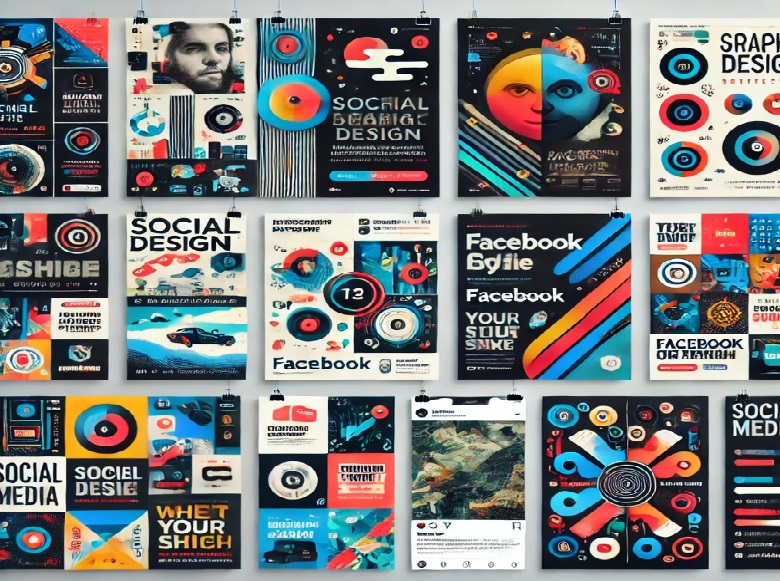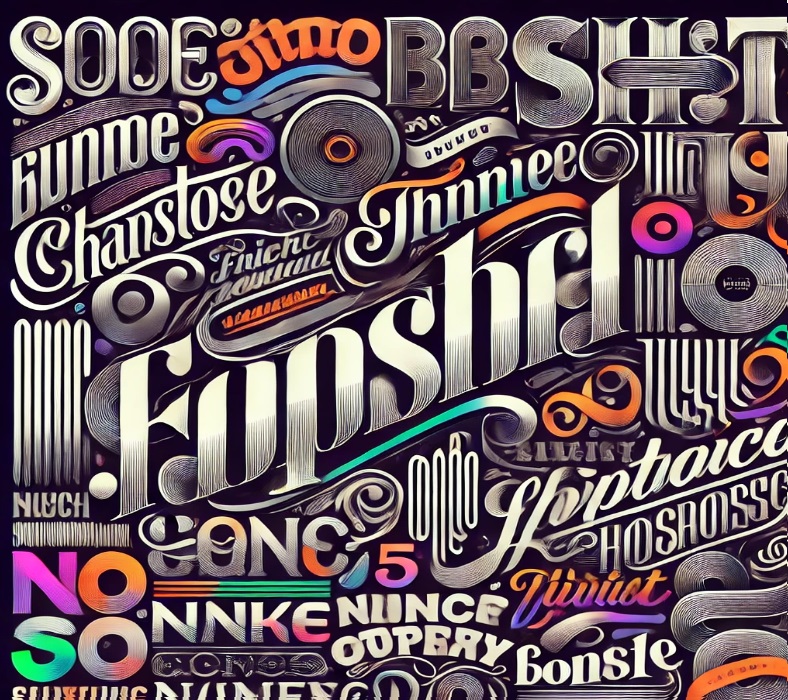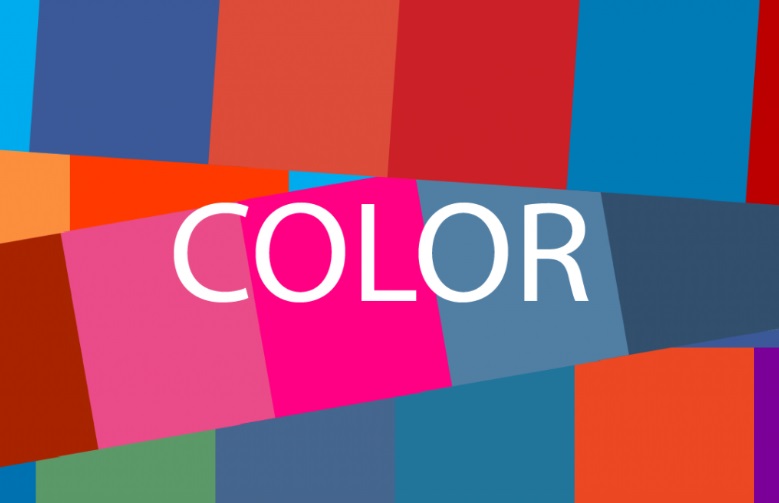Line25 is reader supported. At no cost to you a commission from sponsors may be earned when a purchase is made via links on the site. Learn more

Social media has been the most central place for communication, marketing, and brand engagement in today’s fast-paced digital world. In the sea of unending posts and social updates, creating visually appealing content has the power to attract attention, convey effective messages, and leave a lasting impression on your audience.
Graphic design for social media is more than just creating aesthetically-pleasing visual elements but rather it is about developing designs that will touch the hearts of your audience, effectively represent your brand identity, and evoke appropriate action. From eye-catching posts and shareable infographics to engaging stories and interactive advertisements, effective social media design is a combination of creativity, strategy, and technical know-how.
This guide details the principles, tools, and techniques on creating graphic designs for social media. It will serve as an eye opener to budding or aspiring graphic designers. At the same time, it will offer refreshing lessons that will establish a more profound understanding of matters with regard to creating social media content.
What’s the Importance of Graphic Design?

Graphic design is where the magic in social media begins. It translates ideas into visually-powerful content that gains attention and expresses messages effectively, especially in the space where users barely spend a fraction of a second to view each post. Stronger visual designs make such content stand out and engage more audiences.
Moreover, good graphic designs not only enhance the aesthetic appeal of content but also develop brand credibility and build emotional connection to the viewers. It helps communicate complex information in a more comprehensible way so that your message has a higher chance of penetrating the audiences. Graphic design, to put it simply, is the bridge between creativity and strategy.
FONTS FOR YOUR T- SHIRTS!
10 Creative Graphic Design Tips for Your Social Media
1. Maintain Consistent Branding
Consistent branding is the foundation of a recognizable and trustworthy online presence on social media. As an entrepreneur, you must create a unique and distinguishable brand look using consistent colors, fonts, logos, and design elements throughout all of your posts. Consistency can strengthen your brand identity and promote familiarity, two of the key components in gaining an audience’s trust and loyalty.
2. Embrace Simplicity
In social media design, simplicity is the key to creating content that captures attention and communicates effectively. A clean and uncluttered design ensures your message stands out without overwhelming your audience. Focus on one core idea or call-to-action per post by using minimal yet impactful elements to convey your message.
Use negative space strategically to give your designs breathing room. Guide the eye of the viewer to the important aspects of the designs. Keep the number of colors and fonts to a minimum to make sure the design feels harmonious and professional. Simple doesn’t mean boring; there is depth without clutter just by using well-placed icons or thoughtful text hierarchy.
3. Leverage Bold Typography

Bold typography is a powerful design tool that grabs attention, emphasizes key messages, and adds personality to your social media content. Using large and striking fonts can help your text stand out in crowded social media feeds, ensuring your audience does not miss the main point of your message.
Experiment with weights, sizes, and styles to build visual hierarchy which will guide the viewer’s eye through the content. Balance headline text type with less prominent and less complex type of secondary information. Don’t be afraid to use multiple typefaces: combine sans-serif and serif, or play with creative display fonts for something dynamic yet coherent.
4. Incorporate Eye-Catching Visuals
Engaging social media content must have good visuals. The addition of catchy elements will really make a difference with regard to the impact of your post. Images, illustrations, and custom graphics can immediately capture a viewer’s attention and get your message across faster than text alone. Moreover, vibrant colors, interesting textures, or striking contrasts can really make your visuals pop amidst the busy social media feeds.
Consider the possibility of incorporating motion graphics or subtle animations in the form of GIFs or very short videos. If feasible, you may also create custom illustrations or iconography that offer a unique touch to your brand which will distinguish your posts from generic stock imagery. If pictures are used, the application of images should reflect your brand’s tone and style, creating a distinctive and memorable identity.
5. Tailor Designs for Each Platform
Each social media platform has its own audience preferences, post formats, and design requirements which highlights the importance to customize your designs for optimal performance. From size dimensions to content style, tailoring your designs ensures that your posts are high quality and resonate with the platform’s users.
For example:
- Instagram favors visually stunning images, carousel posts, and vertical stories (1080x1920px). You may use bold visuals and concise text for maximum impact.
- Facebook supports versatile content but performs best with horizontal images (1200x630px) and shareable infographics.
- Twitter thrives on simplicity and concise messaging. Use horizontal graphics (1200x675px) with minimal text to drive engagement.
- LinkedIn prefers professional and educational visuals (1200x627px). Incorporate a clean, corporate look with muted tones and clear typography.
- TikTok and Reels prioritize vertical videos with engaging motion and text overlays (1080x1920px).
6. Play with Colors

Color is one of the most effective ways to capture attention and evoke emotions in your social media designs. Bold, contrasting colors can make your posts stand out in users’ feeds, while harmonious color palettes create a sense of cohesion and professionalism. Experimenting with different color schemes can help convey the mood of your content and reflect your brand’s personality.
Here are some tips for using color creatively:
- Contrast for visibility: Use contrasting colors (e.g., dark text on light backgrounds) to ensure your text is easy to read and stands out.
- Color psychology: Different colors evoke different emotions. For example, blue is often associated with trust, while red conveys urgency or excitement. Choose colors that align with your message.
- Gradients and overlays: Add depth and visual interest to your designs with gradients or color overlays. Soft gradient backgrounds can make text more readable while giving your posts a modern feel.
- Accent colors: Use bold accent colors for key elements like CTAs or important messages. This draws the viewer’s attention directly to what matters most.
- Consistency: Stick to a defined color palette that aligns with your branding to maintain consistency and reinforce your brand identity across all posts.
7. Add Call-to-Actions (CTAs)
An effectively designed CTA is one of the best ways to bring people into action by leading your audience towards a specific next move: visit your website, subscribe to your newsletter, or buy something. It is what converts passive viewers to active participants, and fills the gap between attention and action.
- Make it stand out: Use contrasting colors or bold typography to ensure your CTA catches your audience’s eye. The button or text should be distinct from the rest of the design.
- Keep it clear and concise: Use action-oriented, concise language like “Shop Now,” “Learn More,” or “Join Us.” Ensure your CTA communicates exactly what you want your audience to do.
- Create a sense of urgency: Phrases like “Limited Time Offer” or “Don’t Miss Out” can prompt immediate action by creating a sense of urgency or exclusivity.
- Position strategically: Place your CTA where it’s easy to find—typically at the end of the post or near an image focal point. You can also repeat CTAs across different parts of a multi-slide carousel or a video.
- Use visual cues: Use items such as arrows, buttons, or icons to draw eyes to the CTA and persuade them to act.
- Make it mobile-friendly: Most social media engagement occurs on mobile devices, so graphics must be easy to view and function properly on different devices.
8. Use Design Tools and Templates
Design tools and templates are invaluable for creating professional-looking social media graphics, even if you’re not a seasoned designer. They streamline the process, allowing you to focus on creativity and strategy while ensuring your content meets platform specifications and branding requirements.
Popular design tools include:
- Canva: Ideal for beginners with a vast library of templates, icons, and fonts.
- Adobe Express: Great for more polished designs with advanced features but still beginner-friendly.
- Figma: A collaborative design tool often used by professional designers, with extensive flexibility and customization options.
9. Incorporate Trends Wisely
Knowing ahead of time what works best with each platform will not only help your audience but will make things easier for you in the long run. Knowing what the people want to see in each social network will help you enhance their user experience.
Trends are a great way to keep your social media content fresh, relevant, and engaging. By staying up-to-date with popular design styles, themes, and platform features, you can ensure your posts resonate with current audience preferences. However, it’s important to use trends strategically to maintain authenticity and alignment with your brand’s identity.
10. Test and Optimize
Testing and optimizing your social media designs is the key to improving engagement and ensuring your content resonates with your audience. By experimenting with different design elements, layouts, and strategies, you can gather valuable insights into what works and refine your approach over time. Experiment with different styles and layouts to see what resonates most with your audience.
Conclusion
Graphic design is an important part of social media content creation: effective use of typography, strategic use of color, and the right combination of elements greatly contribute to making visually-appealing designs that resonate with your audience and establish consistency with the brand’s identity.
In doing so, you will streamline your creative process, keep it consistent and relevant by tailoring your designs for each platform, incorporate eye-catching visuals, and use templates or design tools.
In addition, the business owner should review the recent and emerging design trends through quality testing to ensure that it aligns with your brand’s unique voice. Social media design is not merely about aesthetics, but rather it is about crafting an effective message towards the target audience which will likely encourage the audience to take relevant actions.
To ensure that your social media presence stands out and fosters lasting audience engagement, it is essential to the aforementioned design approaches. These approaches include regularly testing and optimizing your content, while at the same time, building credibility to your brand. In doing so, you can achieve designs that are impactful which will eventually resonate with your audience.
Common Questions about Graphic Design ideas for Social Media
A social media graphics package can include everything from logo design to profile pictures and cover images, giving businesses a comprehensive social media branding solution.
- Why graphics?
- Optimise your images for different social networks.
- Include your logo in your profile image.
- Your profile image and cover photo should complement each other.
- Use a consistent style of images.
- Use consistent branding.
- Create a variety of valuable content.
Graphic designers use different social media platforms for various purposes. Instagram and Pinterest are great for displaying visuals to a broader audience, while LinkedIn and Twitter are better suited for building professional connections and sharing industry knowledge.
Social media graphics should deliver a message both simplistically and visually. Graphics should avoid containing text but, when necessary, the text should be minimal as to not crowd the graphic and to stay within Web Content Accessibility Guidelines 2.0.
Canva is a versatile, free graphic design tool that’s perfect for social media design elements. Canva’s templates take the guesswork out of appropriate sizes for each social media platform. Canva is great for simple graphic design projects that give your social media posts a creative boost.

